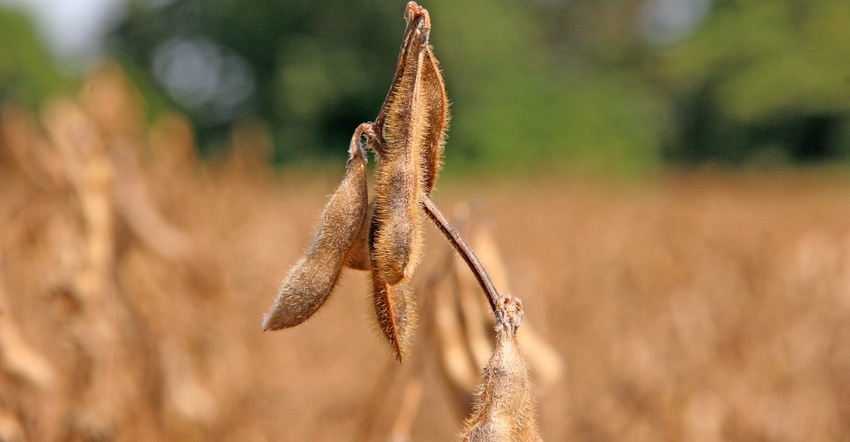
 *This is the thirteenth article in our 2022 Southwest Economic Outlook series. Hear from Oklahoma State University and Texas A&M AgriLife Extension economists about the 2022 outlook.
*This is the thirteenth article in our 2022 Southwest Economic Outlook series. Hear from Oklahoma State University and Texas A&M AgriLife Extension economists about the 2022 outlook.
The start of 2021 for soybean producers was a stark contrast to 2020. Prices were excellent to begin the crop year which expanded acreage across the U.S. and onto more marginal land. The favorable price outlook led producers to plant 87.2 million acres up from the 83.4 million planted in 2020.
Yield was relatively unchanged from the previous year up 0.2 bu./acre to 51.2 bu./acre which pushed U.S. ending stocks to 340 million bushels. In the previous two production years, beginning stocks were 909 and 525 million bushels in 2019 and 2020 respectively. Soybean use decreased slightly year over year to 4.36 billion bushels decreasing some 149 million bushels. The largest numerical decrease came from exports falling 215 million bushels. However, demand remained strong with the U.S. exporting 2.05 billion bushels of soybeans in a year where beginning stocks were only 256 million bushels.
Soy oil has seen a welcome increase in total use of 1.25 billion pounds where a large increase came from biofuel use. Soy meal also saw more demand in 2021 as exports increased 432 thousand short tons with a production increase of 1.144 million short tons.
It will be difficult to predict farmers' interest in soybeans for the 2022/23 crop year. Drought across the Southern Plains and a La Nina weather pattern are not good omens for higher production. Couple that with higher wheat and feed grain prices, it is likely that growers in non-traditional soybean growing areas will revert to crops more suited to their growing conditions. The yearly percent change in price for corn and hard red wheat are outpacing soybeans by 14.96% and 17.36% respectively. Farmers will need to rely on their own budgets to determine which commodity is best. In the last year, hard red wheat has increased in price by 41.15%, corn by 38.75% and soybeans by 23.79% on new crop contracts.
Inputs will play a major role in crop selection for the coming year. One major advantage soybeans have over other crops is the ability to fix nitrogen. Producers looking to lower their nitrogen costs will be keen to add soybean to their rotation to assist with cash flow. Early pricing programs on seed look to be similar in cost to previous years so this is a viable option right now. Access to chemical will remain a crucial concern for producers and early contracting of inputs could lessen some of the supply chain constraints producers have already experienced in 2021. Commodity prices are in a much better position for producers than they have been in the recent past and price risk management will be a key to success. Contracting and hedging will ensure that early-season expectations are kept throughout the year, especially when dealing with high input costs.
In 2019 the average U.S. farm price for soybeans was $8.57/bu., in 2020 it was $10.80/bu. and for 2021 it is forecast to be $12.10/bu. These increases in price have resulted in an in-kind increase in planted acres. Recent increases in corn and hard red wheat have reduced the price gap between the commodities and should mute some of the excitement for soybeans. Beginning stocks will not be unmanageable for 2022 but have increased over year-ago levels. If demand remains strong and prices are supported, soybeans will continue to compete for over 85 million acres as we approach the planting season.
Missed an article in this series? Click the following links:
About the Author(s)
You May Also Like




